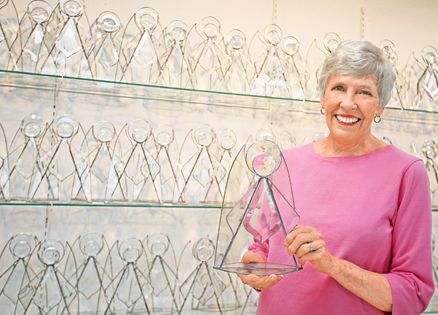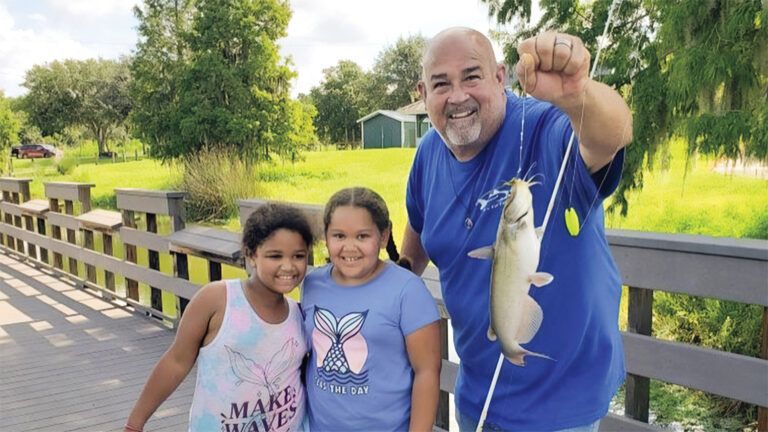My garage is overflowing with cardboard boxes. Stacks of storage containers line my spare bedroom and foam packing pellets are scattered all over the basement.
Am I moving? No. But I’ve been moved. By angels.
Thirty years ago, my husband, Jerry, an electrical engineer, got a job in Annapolis. We bought a house here and one of the first people I met was Susie—a bright, energetic, witty mom of three. We belonged to the same women’s organization. Spending time with Susie, I forgot I was new in town. She made me feel so at home.
But our carefree days were cut short. Just before Christmas, 1982, Susie was diagnosed with leukemia. She started chemotherapy treatments right away at Johns Hopkins oncology center in Baltimore. I called her often, wrote her little get-well cards and visited her in the hospital. Then another setback: Her husband was laid off. “I’m so worried about all the medical bills piling up,” she confided during one visit. “Can you please pray for us?”
So I did. Every day. But I wanted to do more. Friends of ours shuttled her kids to after-school activities, others cooked meals and baked desserts.
Now, as Jerry can attest, I’m no cook. I am an artist, though. One night, lying in bed, I tossed and turned. Lord, help me use my art to help Susie. My mind drifted to a stained-glass class I’d taken a while back. I usually worked with oil paints, but there was something about the way sunlight shimmered through the glass that felt peaceful, almost healing. What else was peaceful and healing?
Angels.
The next morning I got right to work. I used an aqua shade of glass (Susie’s favorite color) for the body and a silvery pearl glass for the wings. It was a long, painstaking process—lining up the pattern, cutting the glass, foiling the sides. I worked a little bit at a time. Susie’s angel stood just over a foot tall and I topped her off with a golden halo and added a holder for a votive candle.
A couple of days before Christmas, I brought the angel to Susie’s hospital room. “I made this for you,” I said.
“Oh, Bobbie!” Susie gasped. “I love it! Put her on the table over there so I can see her all the time.”
Whenever I’d visit Susie, she’d tell me how much she loved the angel. I thought she was just being sweet. One afternoon, though, she mentioned that someone had asked her where they could buy one. “I told them you made it for me,” she said. “And they asked me where you sell them. You really ought to make more of these.”
More? I loved making the angel—but it had taken me almost 20 hours. There was no way I’d have the time to make more and keep up with my other artwork. I was about to tell Susie it was impossible when it hit me: I’d round up the folks who asked her about the angel and teach them how to make one too. Then we could sell them and give the money to Susie and her family to help with her medical expenses.
I invited about a dozen women—mostly Susie’s friends and family—over to my house. Right there in my living room, we cut shapes from sheet glass and wrapped the edges in foil. Even Jerry got in on the act, helping us solder the pieces together. I told Susie about our stained-glass operation. She was thrilled! Within a few months we presented her family with a check for two hundred dollars. It wasn’t much, but it was a start.
Word of mouth spread…fast. Soon we had 30 volunteers and an assembly line that outgrew our living room. Jerry and I cleared the clutter out of our basement and set up shop down there. “It really looks like an angel factory!” Jerry said, laughing, when he saw all of us at work.
A year after we started making angels we’d raised more than a thousand dollars for Susie and her family. Despite aggressive treatment, her health grew worse. On December 15, 1983, Susie died.
Heartbroken, we donated the rest of the profits to Susie’s doctor, who was conducting leukemia research. Several months later, Susie’s husband and parents urged us to make more angels. A lot more. They wanted the money to go to area hospitals so even more folks could benefit.
It was a great idea, but I was worried. Selling a few angels to help Susie was one thing. Would we be able to sell enough to help hundreds, maybe thousands, of patients and doctors? That afternoon I stood and looked around—at the hardworking volunteers, the assembly line. The Angel Factory. I closed my eyes. Lord, I’m putting this in your hands. Show me what to do with these angels.
Almost immediately the phone rang. It was a woman calling from Oregon. “I heard about your angels from a friend of mine who lives in Maryland,” she said. She placed an order for 10 of the larger stained-glass angels—they were forty dollars each! From then on it seemed like the orders never stopped coming. Susie’s family was right—the angels were a hit! I put aside my artwork to make angels full time.
By 1993 we were officially a nonprofit. We called ourselves Caring Collection, Inc., and added other stained-glass figurines, angel pins and sun catchers in every shape from hummingbirds to lighthouses. Orders from all over the world poured in: France, Germany, England, Russia, Australia, South Africa.
It seemed everyone had been touched by cancer. People really wanted to help.
And they still do! To date we’ve donated $845,000 for cancer-research equipment to the Johns Hopkins oncology center, where Susie was treated, and for patient-care equipment to the Anne Arundel oncology center in Annapolis. We’ve helped the hospitals purchase ultrasound machines, blanket warmers, and fiber-optic devices that detect tumors. Our goal is to raise one million dollars—and I know we’ll reach it.
A few major corporations have offered to mass-produce the angels over the years, but I’ve turned them down. Part of what makes these figurines so special is that each one passes through the caring hands of more than 20 of our volunteers before it’s finished. I think each angel carries all that love and hope to the recipient. Susie would be proud of that.
These days my basement is more crowded than ever. Jerry and I don’t have children, but our 90 volunteers make a big extended family. Let me make it clear, though, that these workers don’t come around for free. Oh no. We pay them…in jelly beans and pretzels!
Our youngest is a 14-year-old high-school student. Our oldest? An 89-year-old retired teacher. Each volunteer has her own story, his own reason for being part of the Angel Factory. Some are cancer survivors, some are undergoing treatment and some just want to help because they can. Like Katherine, who started volunteering when she was still in high school. Back then she cut her fingers more than she cut the glass! Now she cuts our patterns like a pro and is teaching me how to use the computer.
Then there’s Sylvie. I met her in 1983. Some of my artwork was going to be displayed in a gallery in the South of France. I had two weeks to learn some French, so I called a local language organization. Sylvie answered.
“You’re not going to learn much in two weeks,” she said. And you know something? She was right. I still can’t speak a lick of French, but in those two weeks I told Sylvie so much about the angels that she’s been volunteering ever since.
Perhaps the three most fervent supporters of the Caring Collection are a dedicated set of siblings whose lives have been forever altered by cancer: Susie’s children, Katie, Jenny and Matt.
I’ve had people ask me, “Do you think you’ll ever stop making angels?” The truth is, I almost did. In 1994, Jerry retired. “Please retire with me,” he said. “You’ve spent years making these angels, and they’ve helped a lot of people. But maybe it’s time for a break. Just think of all the trips we can take.”
I had to admit, seeing the world together sounded enticing. But several months after he retired, Jerry was diagnosed with colon cancer. His prognosis was good, yet I couldn’t help but worry. To lift his spirits I did the best thing I knew how: I made him a stained-glass angel. If I retire, this could be the last angel I make, I thought, hanging it from the IV pole in Jerry’s hospital room. Jerry looked at the angel, then at me. Tears filled his eyes.
“Promise me you’ll never stop making these,” he said. “Everyone needs an angel. Everyone needs hope.”
Jerry’s now in remission and his angel hangs on our living-room wall—a reminder to keep the Caring Collection going for as long as we possibly can.
See what I mean when I said I’ve been moved by angels?
Download your free ebook, Angel Sightings: 7 Inspirational Stories About Heavenly Angels and Everyday Angels on Earth.






